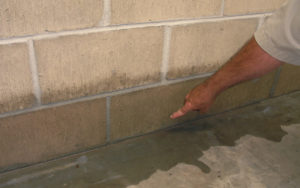More About Best Basement Waterproofing
More About Best Basement Waterproofing
Blog Article
The Only Guide to Best Basement Waterproofing
Table of ContentsBest Basement Waterproofing Can Be Fun For EveryoneTop Guidelines Of Best Basement WaterproofingThe Single Strategy To Use For Best Basement WaterproofingBest Basement Waterproofing - QuestionsThe Best Basement Waterproofing Diaries
AdvantaClean's qualified experts and service technicians will certainly locate the water source. If wall surface or slab fractures are existing, we will certainly infuse polyurethane and epoxies into the fractures and seal the concession, protecting against further wetness from entering.Setting up cellar air flow systems, conditioning systems, or basement dehumidifier systems to get water out of your basement. Picking AdvantaClean's basement waterproofing solutions is a reliable way to treat moisture and prevent mold and mildew from endangering the structure of your home and the wellness of your family.
If there's condensation on the outside of the foil, you have high moisture in your basement. If the aluminum foil has condensation on the within surface area (next to the wall surface), the dirt around your home may be naturally damp from a high water table or bad soil water drainage.
You can waterproof just your interior walls, which might address the problem. Once they dry, they adhere completely to concrete and masonry walls.
The Best Guide To Best Basement Waterproofing
Swirl the brush at the last stage of application to provide the wall an attractive, ended up look. Concrete water resistant finishings can't be related to formerly painted surfaces; inspect the tag. A 5-gallon container expenses concerning $60. Known as densifiers, they are appropriate just for wall surfaces that haven't been painted or sealed.
But you clean, roll, or spray it on far more thickly one gallon covers just 75 square feet, not the 300 square feet typical with basic paint. Water resistant paint is fine for do it yourself application. You can apply it over painted surfaces, and paint over it once it's treated (one gallon expenses $37).
It can set you back $10,000 to $15,000, depending on the work required. Outside waterproofing includes digging deep into throughout the house fully deepness of the structure walls, after that mounting a water resistant finishing or membrane covered by drain panels. The panels provide a simple path for water to stream to an outside French drain at the base of your structure.
How Best Basement Waterproofing can Save You Time, Stress, and Money.
A basement without waterproofing is kind of like that. Your basement does not desire to go via a rainstorm without correct security just as much as you don't want to.

Exterior waterproofing is a waterproofing approach that includes sealing your home from the outside. The structure wall surfaces are after that cleansed, sealed, and covered with a water resistant membrane or sealant.
The 8-Minute Rule for Best Basement Waterproofing
It's an extra involved process that calls for digging up your yard, which is costly and lengthy. Outside waterproofing includes getting rid of every little thing surrounding your home, consisting of verandas, driveways, sidewalks, landscape design, air conditioning units, decks, and so on. If any of the work was done improperly and water is still entering your cellar, there isn't much you can do to deal with or repair it.
Interior cellar waterproofing includes waterproofing from the inside. Any type of water that leakages into your basement is rerouted prior to it touches your flooring.
It's an effective approach to water-proof your cellar. The downside of interior basement waterproofing primarily pertains to the setup process. This technique requires saved products, furniture, and built-in shelving or cupboards to be moved from touching the basement walls. And during setup, your see this here cellar can't be used. The biggest difference in between the 2 his response approaches is this: Exterior waterproofing is a preventative remedy and indoor waterproofing is a restorative service.
7 Simple Techniques For Best Basement Waterproofing
To conclude, outside and indoor basement waterproofing are both reliable methods of protecting your home from water damage. Outside waterproofing produces an obstacle that prevents water from entering your home, while interior waterproofing redirects water that does enter your home. And it is essential to keep in mind that exterior waterproofing is a costly and turbulent setup process when compared to interior waterproofing.
Whichever method you pick, make sure you select a reliable and credible specialist for the task. Both approaches need knowledgeable employees to handle the work. If you have any kind of questions about cellar waterproofing, please reach out to us. And if you remain in our solution location and have water in your cellar, contact us for a free, no-obligation home examination.
You can fill out our form here. Best Basement Waterproofing, start a conversation in the lower right-hand edge, or call us at 1-800-827-0702
Report this page